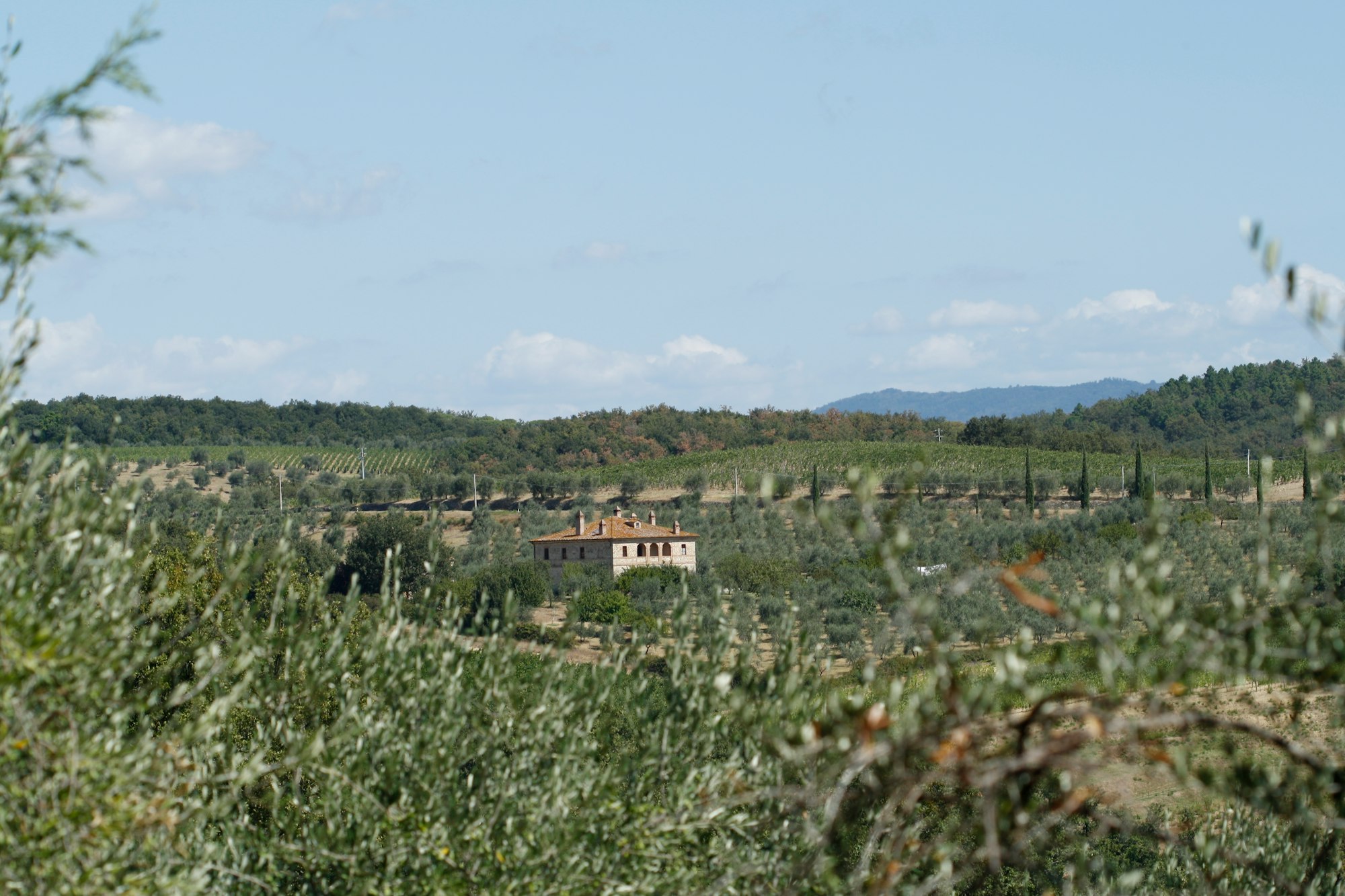Madeira Portugal Travel Guide: A Local's Guide to Authentic Island Life
This Madeira, Portugal travel guide will reveal the soul of the island. Beyond tourist trails and into the heart of authentic Madeiran culture.

This Madeira, Portugal travel guide reveals the soul of the island - beyond the most famous trails and into the heart of authentic Madeiran culture.
Madeira offers something truly unique: it's the only place on Earth where you can witness the rare Zino's Petrel, an endemic seabird that nests exclusively in our laurel forests. This ancient Laurisilva forest, a UNESCO World Heritage site, survived the last Ice Age and represents one of Europe's largest surviving areas of this prehistoric ecosystem.
Madeira is a paradise for hiking enthusiasts. The island operates under Portugal's "right to roam" laws, but with a twist. It has a levada (irrigation canal) system that creates a network of walking trails; these are legally protected from public access.

Welcome to your cultural journey
Zona Velha
This is where Madeirans gather every evening. Start your Madeira, Portugal travel guide adventure in Funchal's Zona Velha (Old Town). The first settlement in the city of Funchal emerged in the area that is currently known as Zona Velha.
The area is known for its narrow, cobblestone streets decorated with urban art on the facades of old houses. Zona Velha is, in fact, an open-air museum. Rua de Santa Maria is where local artists have transformed the neighborhood with painted doors. Each one tells a story of Madeiran history; this isn't just street art; it's a way of preserving cultural memory.
To delight your palate with a traditional dish, go to Taberna Madeira. A place with a maximum capacity of 40 people, but with local flavors beautifully presented in each dish. Its specialty is fresh meat and fish dishes, all paired with wines (regional and international).
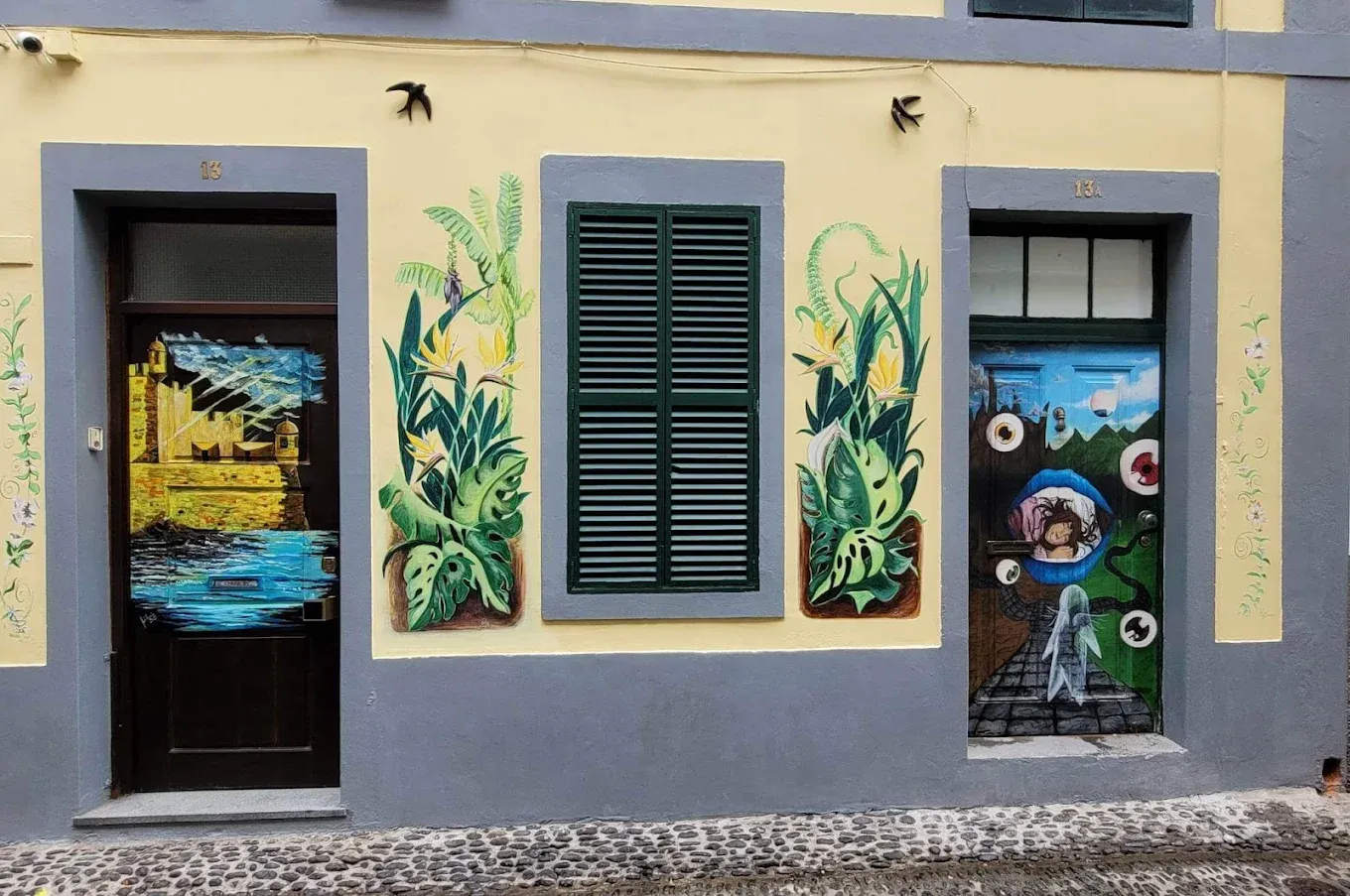
Câmara de Lobos
South of Madeira is Câmara de Lobos, so named because of the large number of sea lions that lived there several centuries ago. This was the first town inhabited by the navigator João Gonçalves Zarco. He called it "the pearl of the Atlantic" and settled there for four years—from 1420 to 1424.
Several monuments take you back to that time, such as the 15th-century chapel of Nossa Senhora da Conceição and the former convent of São Bernardino, dating from 1425.
Câmara de Lobos is a community known for its traditional fishing. At 6 AM, you can see the fishermen returning to land with the day's catch.
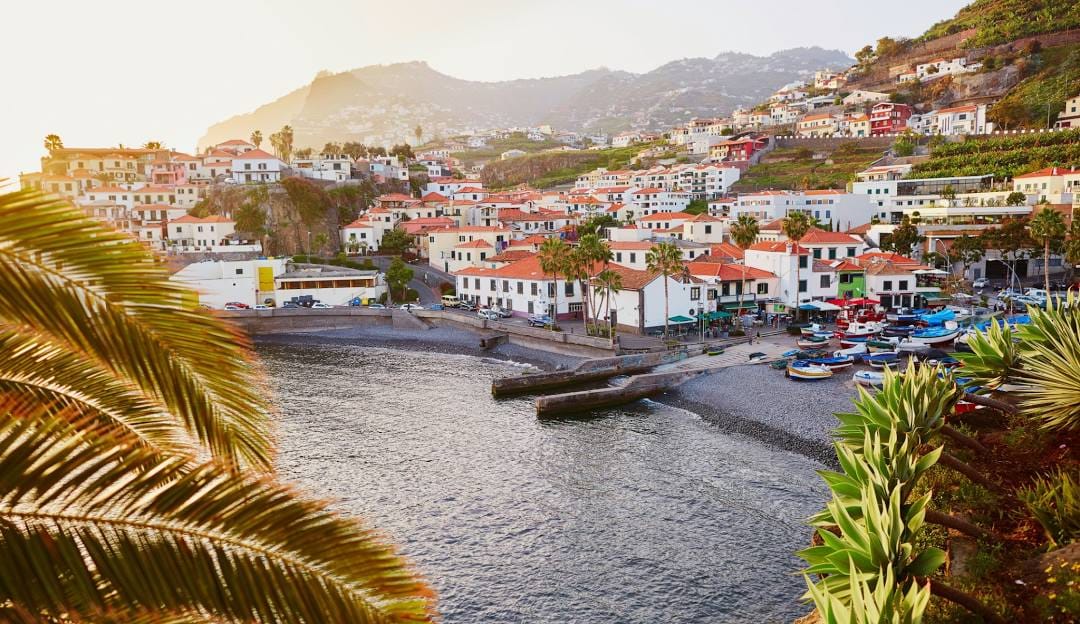
Hiking and Nature
In this Madeira, Portugal travel guide, hiking trails are a must, and so are your visits to the island. The levada system isn't just irrigation - it's cultural heritage. These channels, built by slaves and later by mainland Portuguese workers, tell the story of Madeira's agricultural transformation.
Levada do Caldeirão Verde
Starts in Queimadas Forest Park. The distance to be covered is 8.7 km, takes approximately six and a half hours, and is of medium difficulty.
On this trail, you explore the history of the forest. You begin by seeing the triangular houses with thatched roofs of Santana and advance toward the historic levada, built in the 18th century, that brings water to agricultural lands.
The tunnels dug into the rocks and the 100-meter-high waterfall in the Ribeiro do Caldeirão Verde riverbed are a bonus along the way.

Levada das 25 Fontes
A popular route among locals and visitors alike. It's 4.3 km long and approximately three hours long. This trail is for those who love nature and want to be amazed by observing and exploring it. The panoramic view of the Ribeira da Janela Valley is just the beginning of the trail.
The most impressive stop is the Lagoa das 25 Fontes (Lake of the 25 Fountains), which is fed by the water that flows down from Paúl da Serra. There are 25 waterfalls that you can admire from 25 different points.

Levada do Rei
A trail that leads you to a natural sanctuary. It's called "The King's Levada" for a reason. Its difficulty is medium, measuring 5.3 km round trip and taking approximately three and a half hours to complete.
The density of the forest is the beauty of this trail; thanks to the high humidity in this area, the trees are lush. The São Jorge mill is the only one of its kind still in operation. It is fed by the waters of the King's Levada, and grains grown and harvested in the area are ground there.

Madeira, Portugal Travel Guide: Eating like a local
O Celeiro (Câmara de Lobos): Where fishermen eat. Here you eat what the sea provides. Usually, cataplana (seafood stew) is cooked in copper pots passed down through families. There are gluten-free options, and they take good care of diners' allergies.
Adega da Quinta (Estreito de Câmara de Lobos): Hidden in the vineyards. The owner, Senhor João, tells stories while serving poncha (traditional sugar cane drink) and homemade linguiça. The specialty is Espetada Madeira (beef skewers).
Restaurante do Forte (Funchal): Upscale but authentically local. Chef creates modern interpretations of grandmothers' recipes using indigenous ingredients.
Where to sleep?
The Madeira, Portugal travel guide is complete when I include accommodations.
The recommendations are five-star hotels with sustainable certifications and practices. The first is Belmond Reid's Palace.
Located facing the Atlantic Ocean, in the mornings, you can feel the sea breeze while enjoying a warm and delicious dining experience. It has 126 rooms, a tennis court, a tidal pool, an outdoor pool, and ocean access. It also has four restaurants, a tea terrace, and a cocktail bar.
Their sustainable practices:
- Solar panel systems cover 40% of energy needs.
- Rainwater harvesting for gardens.
- Local sourcing program supporting island farmers.
- Waste reduction program eliminating single-use plastics.
- Historic property (1891) preserving Madeiran architectural heritage.
The second one is Quinta da Casa Branca.
A five-star boutique hotel with 43 rooms with private terraces. It features a botanical garden curated by regional plants and species brought from around the world. It also has a pool and two restaurants. The hotel opened in 1999 and was the first design hotel to open in Madeira.
Their sustainable practices:
- Organic botanical gardens showcasing endemic Madeiran flora.
- Geothermal heating system.
- Partnership with local organic farms.
- Water conservation program reducing consumption by 30%.
- Employment priority for local community members.
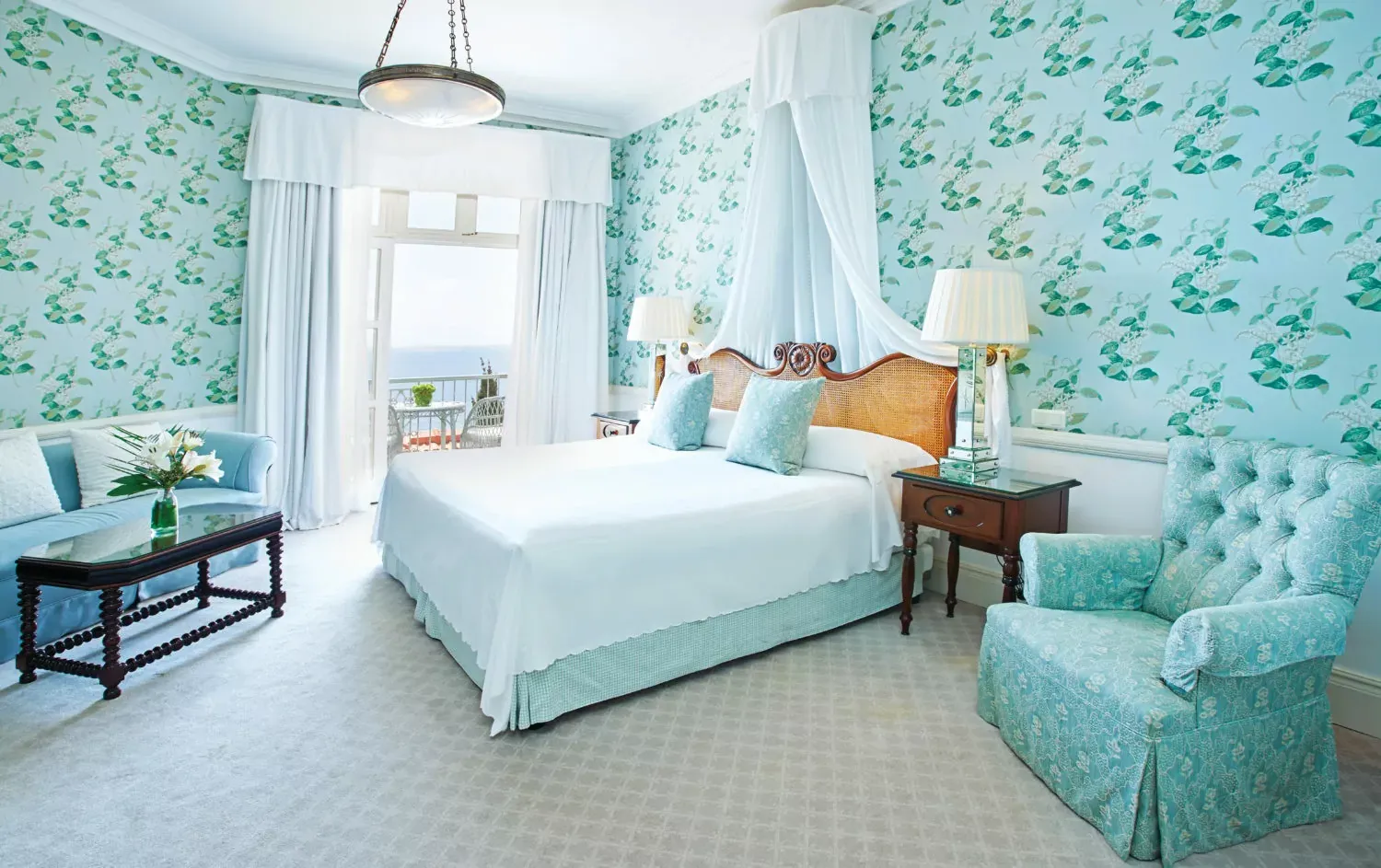
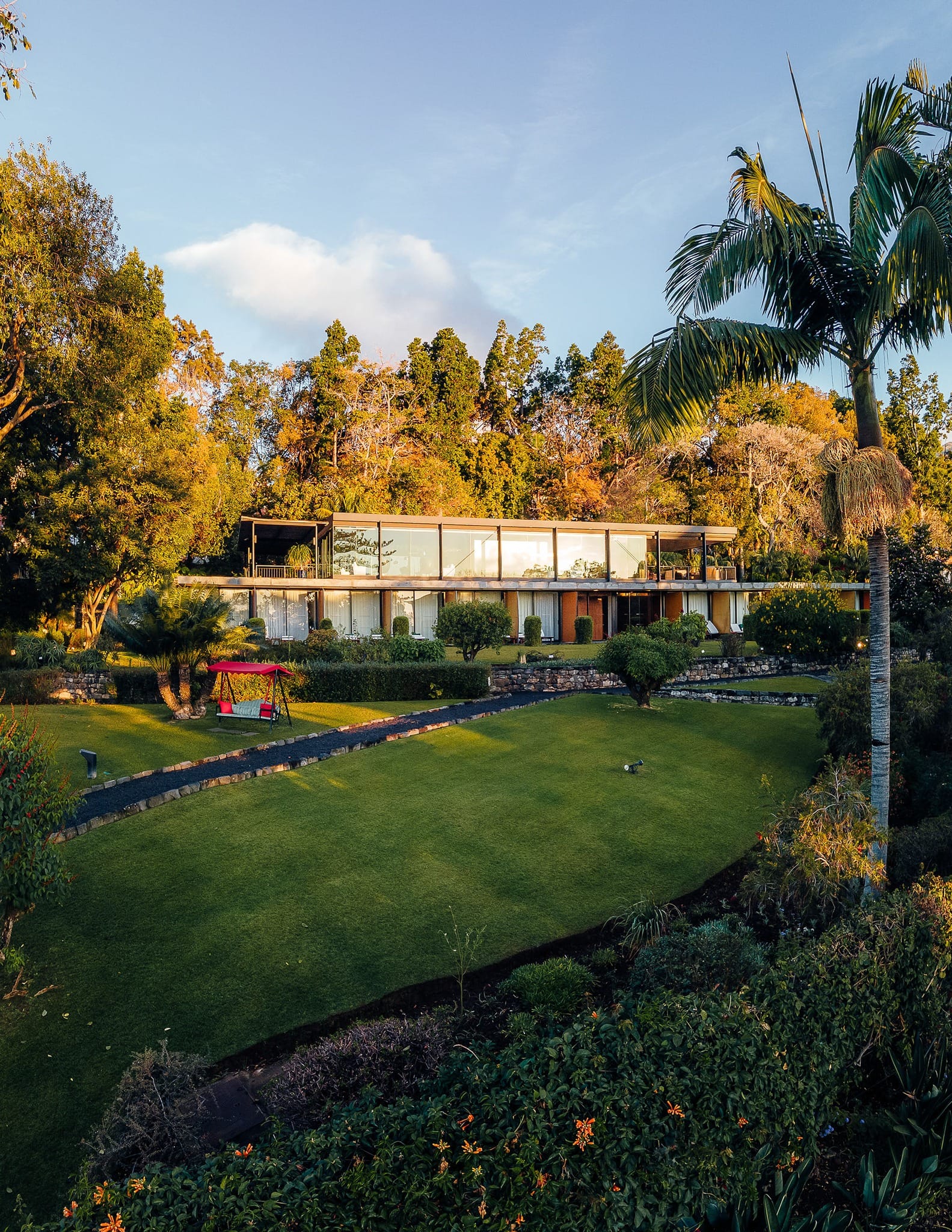
Photo: Reids & Casa Branca.
Must know
Rent a car - our mountain roads tell stories. Each curve reveals terraced vineyards (poios) built by hand over centuries. Don't rush; stop at miradouros (viewpoints) where locals pause daily to appreciate their island.
Local etiquette:
Learn a little about local etiquette with this Madeira, Portugal travel guide.
- Always greet with "Bom dia" or "Boa tarde".
- Accept offers of poncha - it's insulting to refuse.
- Learn basic Portuguese phrases - locals appreciate the effort.
This Madeira, Portugal travel guide scratches the surface of our island's soul. Come with curiosity, leave with understanding. Madeira doesn't just offer experiences; it offers transformation through cultural immersion.
I'm so glad you made it this far. Plan V is an independent magazine, and your donation allows me to continue doing this.
See you soon.
Thank you!
FAQS
How many days do you need in Madeira, Portugal?
For a thorough cultural immersion, plan at least a month. But maybe, 10 to 14 days are ok too. This allows time for multiple levada hikes, exploring different neighborhoods, participating in local festivals, and truly understanding the rhythm of island life. Weekend visitors miss the authentic weekday routines where local culture truly shines.
What is the best month to go to Madeira?
October is ideal - harvest season brings wine festivals, the weather is perfect for hiking, ocean temperatures remain warm from summer, and tourist crowds have diminished. April is second second-best for wildflower blooms and mild temperatures. Avoid December-February due to frequent rain and strong Atlantic winds.
How long is the ferry ride from Portugal to Madeira?
There is no regular ferry service from mainland Portugal to Madeira. The island is accessible only by air (1.5-hour flight from Lisbon) or occasional cruise ships. The last regular ferry service ended decades ago due to rough Atlantic conditions and the 600-mile distance.
Is Madeira expensive to visit?
Madeira is moderately expensive compared to mainland Portugal, but reasonable for Western European standards. Local restaurants cost €15-25 per meal, while tourist areas charge €30-50. Hiking is free, public transportation is affordable (€2-5), and local wine is excellent value. Budget €80-120 daily for comfortable travel, including accommodation, meals, and activities.
